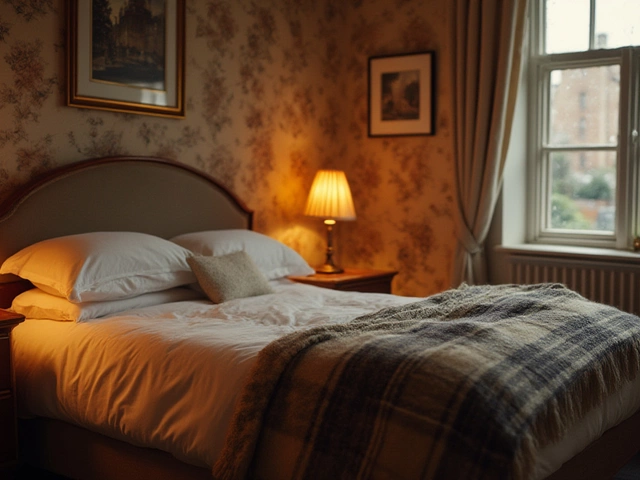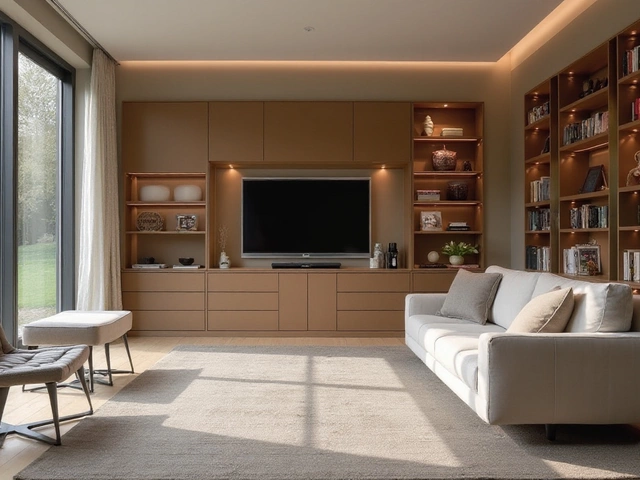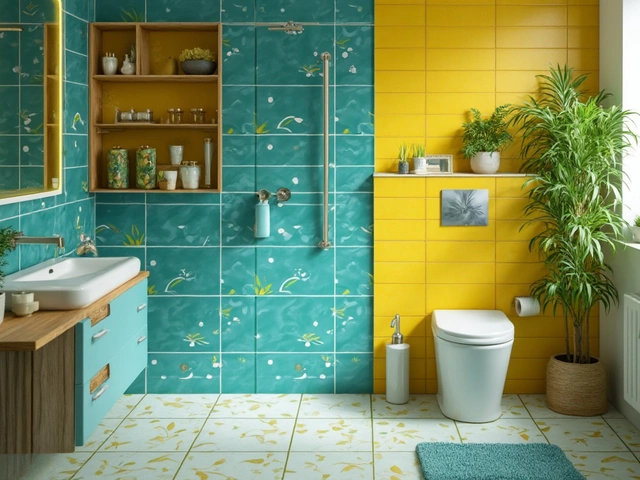Are Expensive Mirrors Worth the Splurge?
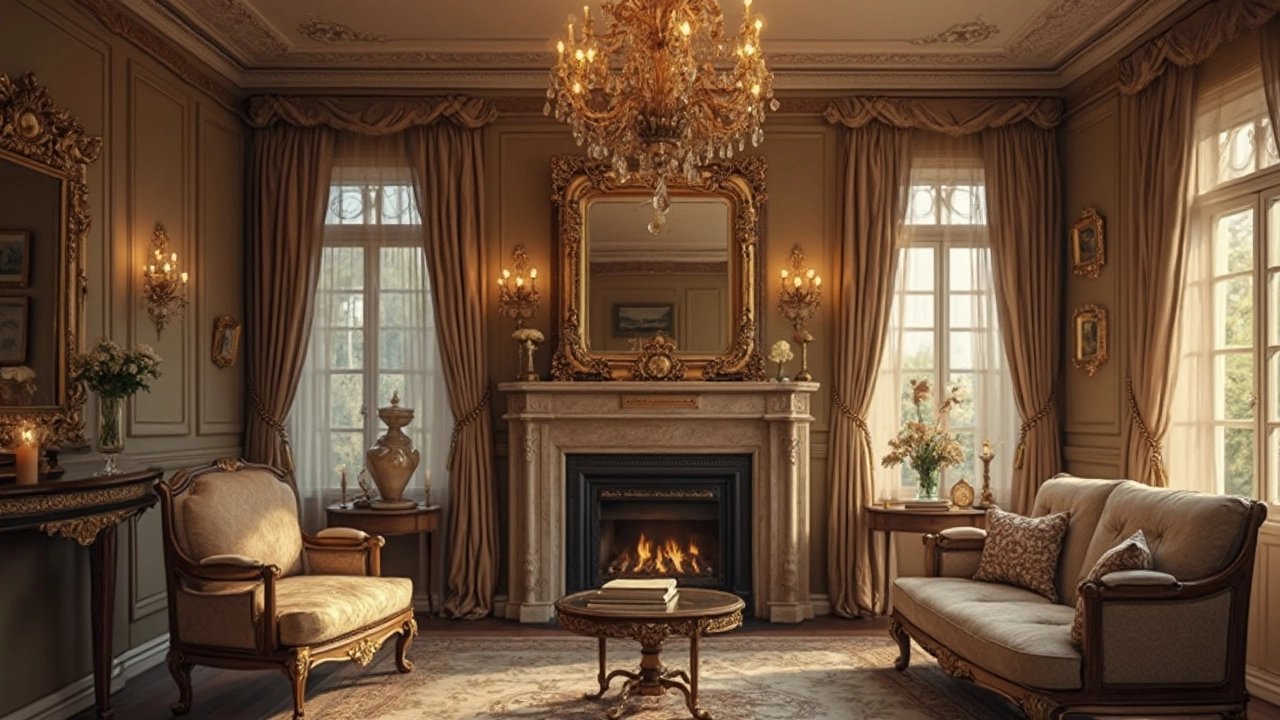
Ever walk into a store, see a mirror, and then almost faint when you see the price tag? It's not just you. Mirrors can sometimes cost as much as a small piece of furniture, and it's not always clear why. What exactly are you paying for when you decide to splurge on a pricey mirror?
First off, let’s talk about the glass itself. Higher quality mirrors often use better glass, which means fewer imperfections and less distortion. Imagine getting dressed in the morning and not being sure if it’s your outfit or the mirror that’s making you look off. Higher-end mirrors tend to be more reliable here.
Another aspect is the frame, which can significantly impact both the price and the aesthetic appeal. Artisanal frames crafted from high-quality materials like solid wood or metal are more durable. Plus, they can turn your mirror into a statement piece in your home.
- Understanding Mirror Quality
- The Role of Mirror Frames
- Craftsmanship and Manufacturing
- When to Invest in Expensive Mirrors
- Tips for Buying Mirrors
Understanding Mirror Quality
When it comes to expensive mirrors, quality is often linked to the type of glass used. Not all glass is created equal, and that's where much of the cost differentiation comes into play. High-quality mirrors use glass that is carefully selected and treated to reduce visual distortions.
One key component of quality is the mirror's thickness. Thicker mirrors tend to have less distortion, giving you a clearer reflection. Often, mirrors at least 1/4 inch thick are considered standard for quality. Anything less might warp over time, especially large mirrors.
Mirror Backing and Coating
The backing is another crucial element. Quality mirrors use a silver or aluminum coating applied to the back of the glass. Silver coating often gives a brighter reflection, which is why it usually comes with a higher price tag. But beware, not all silver-backed mirrors are created equal. The number of protective layers over the initial coating can significantly affect durability. Look for mirrors with a copper-free silver backing for enhanced longevity.
Edge Treatments
The way a mirror's edges are finished also contributes to the cost and overall quality. Better mirrors often have polished or beveled edges, which not only look more refined but also prevent chipping. These extra finishing touches are part of what you're buying when you choose an expensive mirror.
For the super curious, here's a bit of trivia: According to some manufacturing standards, mirrors should reflect an object with no more than a 2% distortion. Something to think about the next time you're considering investing in a top-tier mirror!
The Role of Mirror Frames
What’s the first thing you notice when you look at a mirror? Often, it’s not the glass itself but the frame. The frame of a mirror isn't just a decorative addition. It's a fundamental component that can affect the overall look and feel of the piece, and sometimes, the price tag too.
The Impact of Materials
Premium frames are usually crafted from high-quality materials like solid wood, metal, or even unique options like bamboo or driftwood. These materials don’t just look good; they last longer and withstand the test of time. Ever seen a metal-framed mirror that has withstood years without a hint of rust? That's why people opt for materials that are sturdy and reliable.
When looking at expensive mirrors, the frame often explains at least part of the cost. It’s the craftsmanship, intricate detailing, and sometimes even hand-finishing that make it stand out. That handcrafted look isn’t just for show; it's a mark of quality.
Style and Aesthetic
Frames set the tone for a mirror. A sleek, minimalist metal frame might give your room a modern vibe, while an ornate wooden frame could add a touch of classic elegance. Your home decor style can guide you in choosing the right framed mirror. Plus, a well-chosen frame can turn a simple mirror into a centerpiece of a room.
The Functional Side
Frames are not all about looks; they have a functional role, too. They protect the edges of the mirror and provide structure. To illustrate, a sturdy frame can prevent chipping or cracking, which is especially useful in busy households with kids.
If you’ve ever considered getting an eco-friendly mirror, look into brands using sustainable materials for frames. Some companies offer frames from recycled materials, helping you make a greener choice without compromising on style.
The frame does matter. So, when picking a mirror, think about your style, the quality of materials, and where you plan to hang it. If you’re ever in doubt, remember that a good frame not only supports the mirror but also elevates your entire home aesthetic.
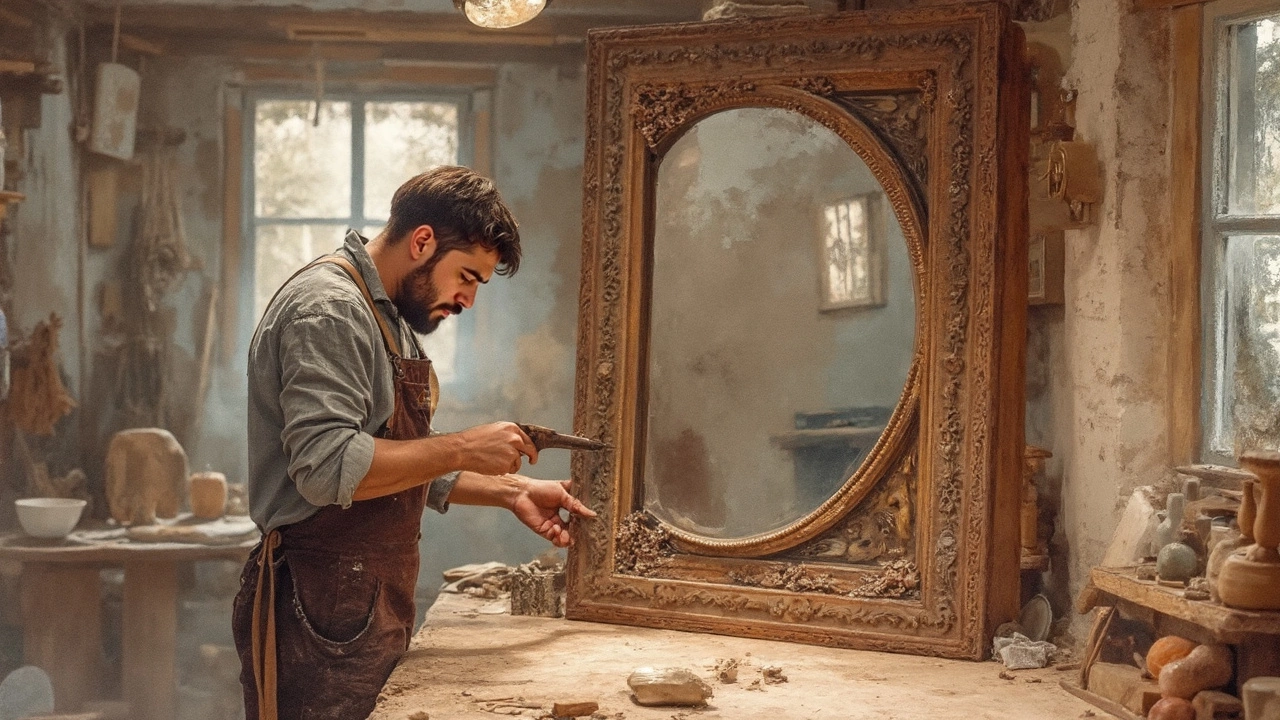
Craftsmanship and Manufacturing
So, let’s dig into what's behind the hefty price tag of expensive mirrors. Craftsmanship and manufacturing play huge roles. High-end mirrors are often a product of expert hands, using refined techniques passed down through generations.
You might wonder, what exactly do artisans do that machines can't? Well, attention to detail for one. Craftsmen hand-polish edges and backs to make sure you get a mirror that's as close to flawless as possible. These meticulous touches set luxury mirrors apart from the rest.
Quality of Materials
Another factor is the materials used. Manufacturers of high-quality mirrors don't cut corners. They use superior glass and coatings to improve reflectivity and clarity. A lot goes into ensuring a perfect reflection that won't warp over time.
According to John Spencer, a seasoned craftsman with over 30 years in the industry, "The difference between a cheap mirror and a high-quality one isn't just in the materials—it's in the time spent perfecting each piece."
Innovative Techniques
Besides traditional techniques, innovation is key. Some luxury brands use advanced methods like anti-fog coatings and shatterproof film layers. These add-ons not only improve safety but also convenience.
Think about the last time you stepped out of a hot shower to a fogged-up mirror. Annoying, right? High-end manufacturing often includes anti-fog technology, saving you from the hassle.
While machines automate the production of cheaper options, it's this skilled craftsmanship and innovative manufacturing that justify the splurge for a premium piece. If you’re pondering over a pricey mirror, knowing this should give you a clearer picture of what you're truly paying for.
When to Invest in Expensive Mirrors
Deciding whether to spend big on a mirror involves thinking about a few specific scenarios. You don't always need to go all out, but sometimes, the splurge is justified. So, when do you pull the trigger on an expensive mirror?
Focal Point in a Room
If you're looking for a statement piece, investing in a high-quality mirror can be a game-changer. A larger, well-crafted mirror can serve as the focal point in your living room or hallway, drawing attention and enhancing the space around it.
Material and Longevity
When durability matters, a pricier mirror with a solid, well-built frame can last decades. Frames made from materials like teak wood or wrought iron not only support the mirror but also ensure it withstands the test of time. A good rule of thumb—if it’s going to be moved around or if you have active kids at home, durability is key.
Collector's Item
For some, mirrors are more than just functional objects. They’re collectibles. If you’ve got an eye for unique designs or antique pieces, investing in a mirror can be akin to buying art. These items often appreciate over time, adding to their value.
Specialized Design Needs
Sometimes, the space you have calls for a specific size or style that only a custom or expensive mirror can provide. Whether it’s a particular shape for an odd corner or a gold leaf antique finish for a vintage vibe, custom options are pricier but fulfill specific design needs.
| Scenario | Justification |
|---|---|
| Living Room Focal Point | Enhance space aesthetics |
| Durability Needed | Withstands active environments |
| Collecting Art | Appreciates in value |
| Custom Design | Specific space needs |
So, keep these factors in mind next time you're shopping. It’s all about understanding your needs and how much you're willing to invest in certain areas of your home. A good mirror can transform a space, making it worth the investment under the right circumstances.
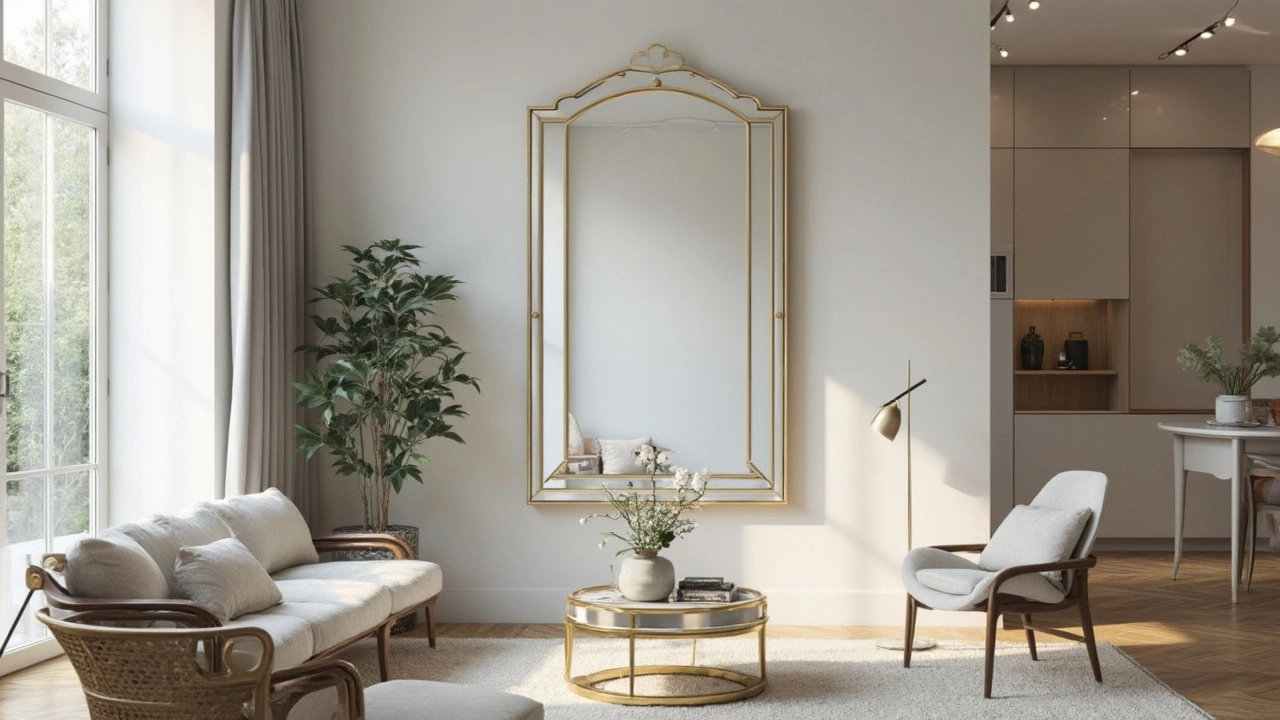
Tips for Buying Mirrors
Choosing the right mirror is more than just finding something that looks good. Here are some practical tips to help you make a smart purchase:
1. Set Your Budget
First things first, decide how much you're willing to spend. Knowing your budget can help you narrow down choices and focus on finding the best within your range.
2. Understand Mirror Quality
Pay attention to the quality of the mirror glass. A high-quality mirror should have a flat, even surface without distortions. Thicker mirrors, like those 1/4 inch thick, usually provide a clearer reflection. It's an investment in how accurate your mirror's reflections will be.
3. Consider Frame Material
The frame can make or break the aesthetic of the mirror. Solid wood or metal frames tend to last longer and look more refined. Choose a style that complements your room's decor and stands out as a centerpiece.
4. Measure Your Space
Before buying, measure the wall space where you plan to hang the mirror. Make sure the mirror is proportionate to the size of the wall and the room. You don't want a mirror that looks lost on a big wall or oversized on a tiny one.
5. Check for Safety Features
If you're shopping for larger mirrors or placing them in areas like a child's room, look for safety features. A good feature is a safety backing that holds the glass together if it breaks.
Additional Tip: Try Before You Buy
Some stores or online retailers allow you to visualize the mirror in your home using augmented reality tools. Take advantage of these to get a sense of how the mirror fits with your existing decor.
Being informed about these factors can help you find mirrors that not only enhance your home but also stand up to the test of time. With these mirror shopping tips, you're now equipped to make a knowledgeable decision, whether you're going for a budget buy or splurging on an expensive mirror.

